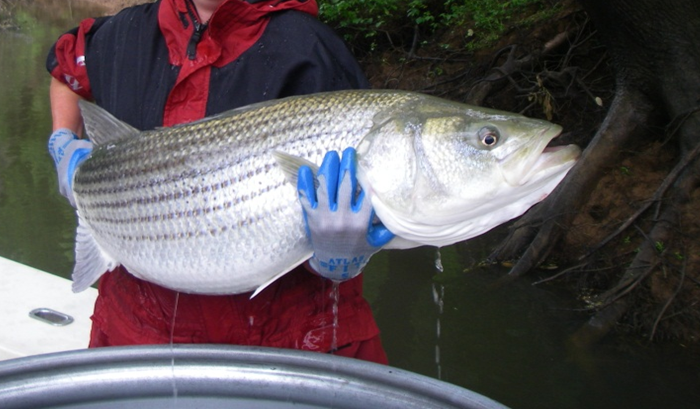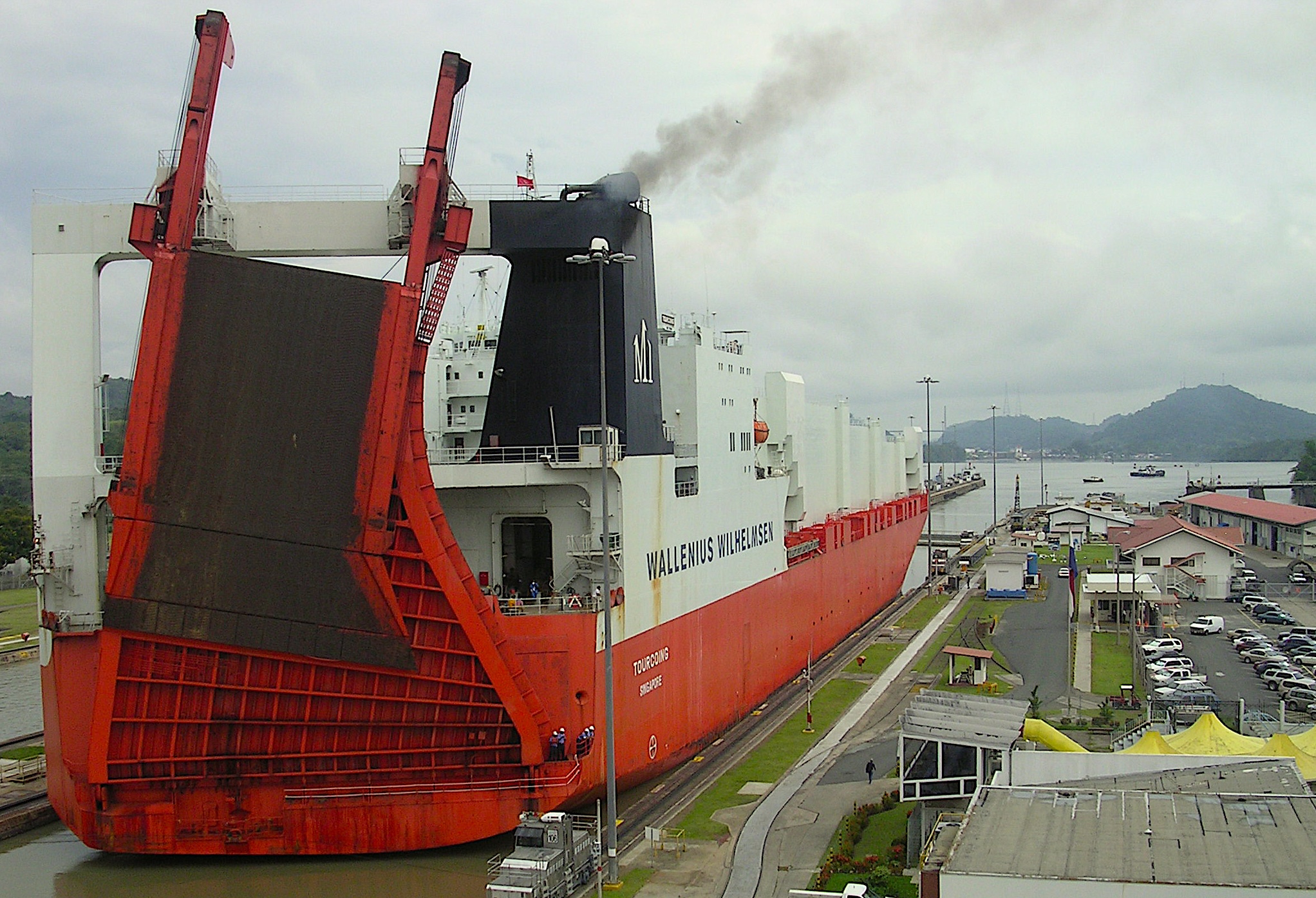What Keeps Striped Bass Populations from Rebounding?

Here’s why the species hasn’t recovered in the Neuse River.
Researchers at North Carolina Sea Grant and NC State University are collaborating with experts along the Atlantic Seaboard on a new aquaculture project to strengthen the domestic striped bass industry: “StriperHub.” Members of the team will be at the North Carolina Aquaculture Development Conference, March 23-25, at the New Bern Riverfront Convention Center.
The N.C. Marine Fisheries Commission adopted the joint Estuarine Striped Bass Fishery Management Plan Amendment 2 in November 2022, a joint plan with the N.C. Wildlife Resources Commission. The goal of Amendment 2 is to manage the fisheries to achieve populations that provide sustainable harvests.
Striped bass have experienced major declines due to overharvesting, water quality degradation, and barriers to their spawning habitats. There is little insight, however, as to why some coastal populations of striped bass have yet to rebound despite prior recovery efforts.
Research Need
Restoration efforts have been successful for specific stocks of striped bass but not all. For example, the fish population in the Neuse River of North Carolina hasn’t recovered despite nearly two decades of reduced harvests, stock enhancement programs, and removal of a dam that had restricted access to the species’ historical spawning grounds.
Low overall population, fewer fish at older ages, and limited younger fish from natural in-river spawning, all are most likely attributable to fishing and environmental causes. Scientists wanted to identify what has kept the Neuse River striped bass population from bouncing back.
What did they study?
Researchers used data from North Carolina resource management agencies on the mortality of wild and hatchery-reared striped bass to develop a predictive population model for the Neuse River. The researchers ran simulations under different scenarios, such as whether the number of fish stocked doubled or if all recreational and commercial harvests were eliminated.
What did they find?
The baseline model predicted few striped bass over age 9, which is consistent with field observations, with a total estimated adult population at a mere 18,457 fish. For context: the state stocked about 125,000 juvenile striped bass in the lower Neuse River annually from 1994 to 2014.
Not surprisingly, eliminating all fishing mortality would have the greatest impact on the population, resulting in a 26-fold increase in older adult fish. The study shows that increasing the number of older and more fertile fish in the Neuse River population may be a prerequisite for successfully building up the numbers of young fish of reproductive ages.
Anything else?
The population model shows that the abundances of adults (age 3+) and older adults (age 6+) were most affected by the natural mortality of juveniles and adults, and, next, by commercial harvest and discard. Doubling the number of fish stocked, however, would have little affect on the number of older adult fish.
Reading
Bradley, C.E., Rice, J.A., and Aday, D.D. 2018. “Modeling the Effects of Vital Rate Manipulation and Management Scenarios to Predict the Population Impact of Restoration Programs on an Unrecovered Coastal Population of Striped Bass.” North American Journal of Fisheries Management. 38:639–649.
The N.C. Wildlife Resource Commission’s Federal Aid in Sport Fish Restoration Grant F-100-R funded this project.
Summary compiled by Sara Mirabilio.
Above photo courtesy of Coley Hughes/Sea Grant.
The text from Hook, Line & Science is available to reprint and republish, but only in its entirety and with this attribution: Hook, Line & Science, courtesy of Scott Baker and Sara Mirabilio, North Carolina Sea Grant. HookLineScience.com
- Categories:



